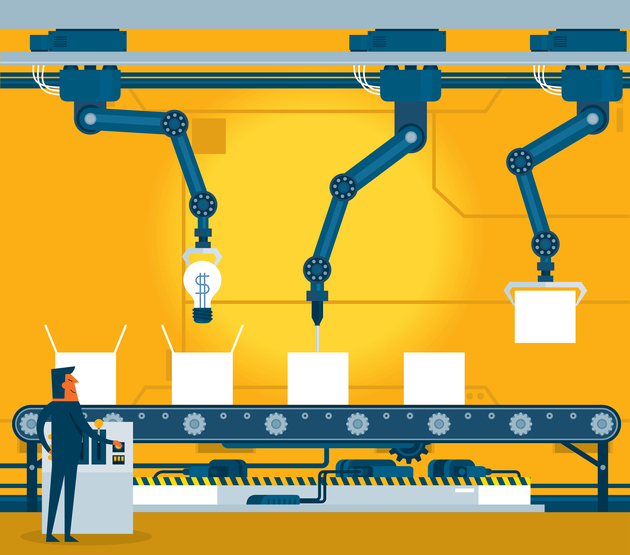The growing popularity of automation is nothing new in the manufacturing industry, with the use of robotics to streamline production having been a common practice for decades. Automation has largely been seen as a cost-cutting measure, as it’s exponentially cheaper to program a machine to do the task or one or more human workers. While cutting costs will always be a factor for businesses that explore automation, some companies are looking at it as a way to increase their revenue.
This shift is more of a viewpoint than a physical change in the way automation is implemented in a facility. By using automated systems, engineers can naturally build them to be more flexible and responsive to the business’ needs. A sudden material supply shortage, for example, no longer needs to halt production in its tracks if the system is built to respond accordingly and modify its processes. With that in mind, automation naturally implements a few different concepts that can increase revenues, including:
• Agility – A system that’s naturally flexible and fluid can quickly respond to outside changes such as market demand or energy costs.
• Connectivity – Automated systems are constantly connected to every step in the production funnel, including sales, logistics, customer service, R&D and more. That connectivity makes it easier to spot issues, correct them, and optimize a process to maximize dollar value.
• Forecasting – With a wealth of data at your fingertips, you can view patterns in your manufacturing process to find bottlenecks, correct them, and reduce waste or excess inventory.
High profile businesses have been investing more and more in automation with the goal of increasing revenue. Tesla, for example, recently purchased Perbix, a company that designs automated manufacturing equipment, with the aim of streamlining more of their production flow and ramping up for their economy class cars to hit the market. Keeping their automation systems in-house definitely cuts costs, but allows them to turn around and reinvest the savings into manufacturing practices that will have a direct impact on revenue.
Automation and cutting costs will always go hand in hand, but with a shift in how we view automation, we can use it to improve the bottom line and make money rather than just save money. It boils down to viewing automation as a means to widen your business’ reach, rather than resolve an issue in the production chain. What do you think are some of the ways facilities will use automation to increase revenue rather than just cut costs? Share your thoughts in the comments section

“Cobots” working alongside their human co-workers can increase revenue by streamlining productivity while increasing worker safety. Thanks for the informative posts.